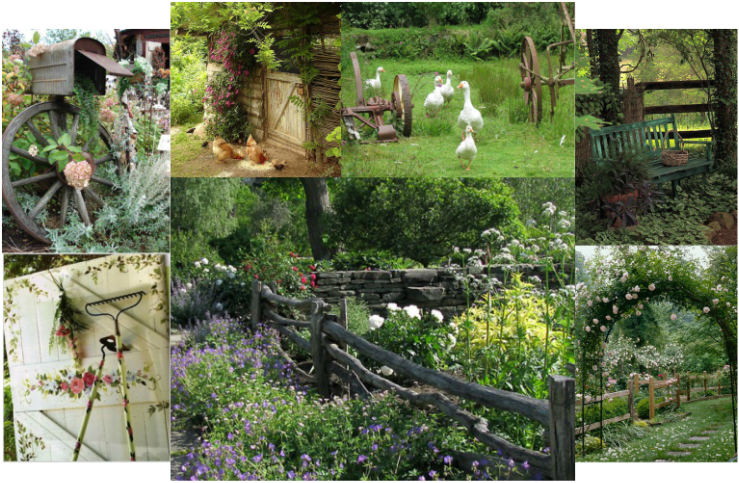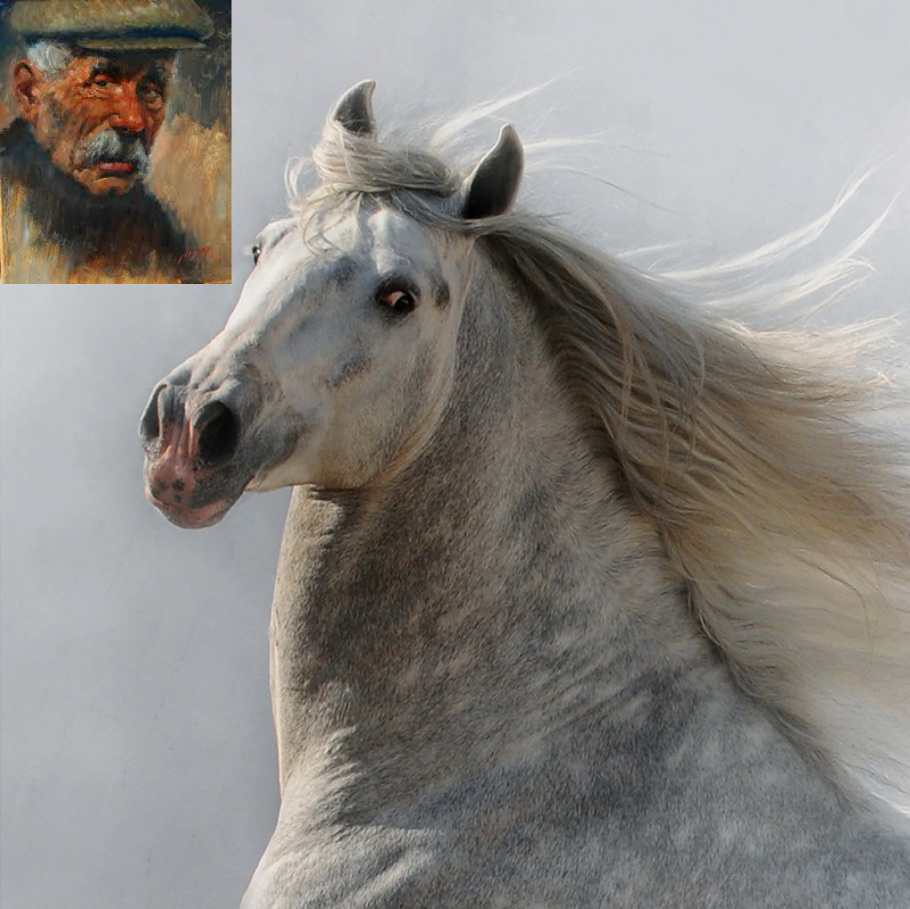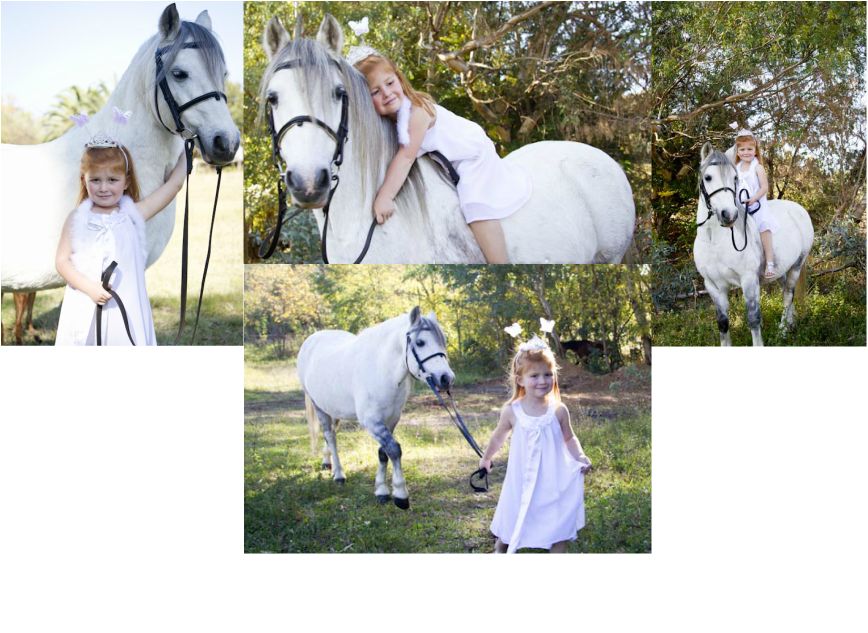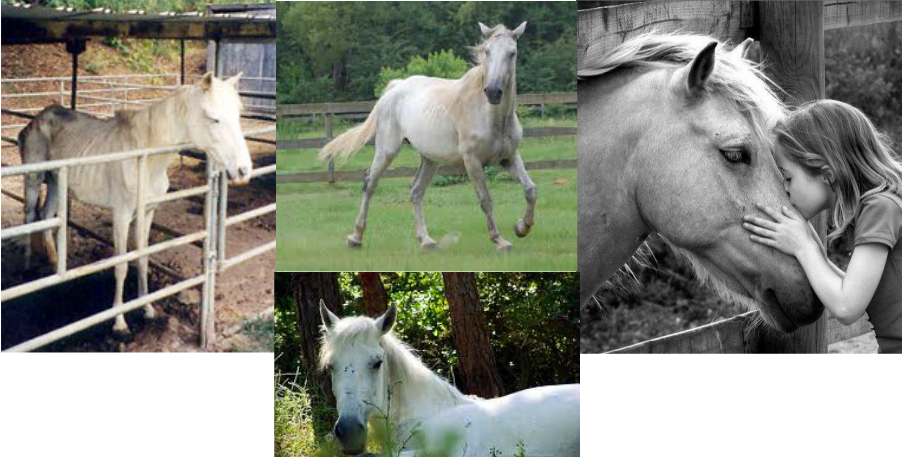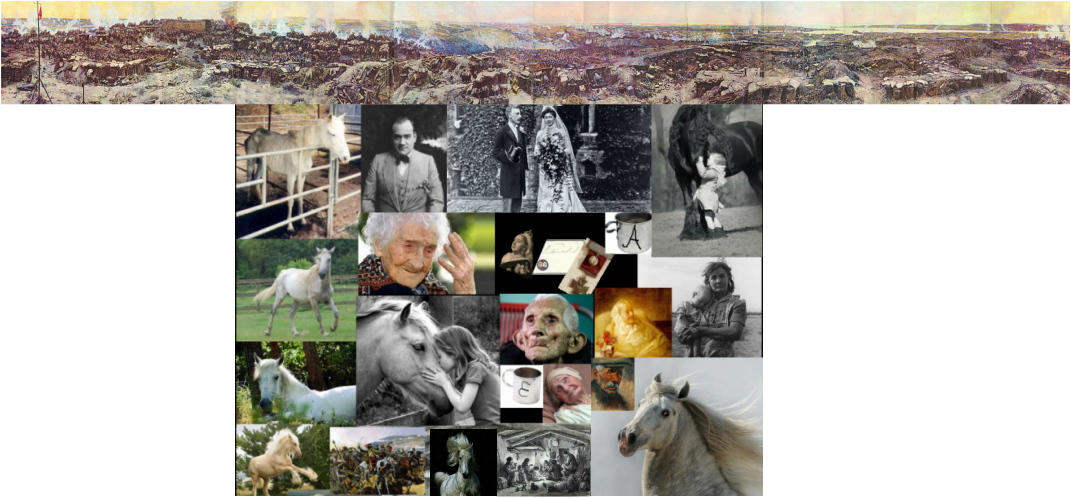- Home
- Site Index
- About Me
-
My Books
- Book List & Themes
- Strictly for Adults Novels >
-
Tales from Portlaw
>
- No Need to Look for Love
- 'The Love Quartet' >
-
The Priest's Calling Card
>
- Chapter One - The Irish Custom
- Chapter Two - Patrick Duffy's Family Background
- Chapter Three - Patrick Duffy Junior's Vocation to Priesthood
- Chapter Four - The first years of the priesthood
- Chapter Five - Father Patrick Duffy in Seattle
- Chapter Six - Father Patrick Duffy, Portlaw Priest
- Chapter Seven - Patrick Duffy Priest Power
- Chapter Eight - Patrick Duffy Groundless Gossip
- Chapter Nine - Monsignor Duffy of Portlaw
- Chapter Ten - The Portlaw Inheritance of Patrick Duffy
- Bigger and Better >
- The Oldest Woman in the World >
-
Sean and Sarah
>
- Chapter 1 - 'Return of the Prodigal Son'
- Chapter 2 - 'The early years of sweet innocence in Portlaw'
- Chapter 3 - 'The Separation'
- Chapter 4 - 'Separation and Betrayal'
- Chapter 5 - 'Portlaw to Manchester'
- Chapter 6 - 'Salford Choices'
- Chapter 7 - 'Life inside Prison'
- Chapter 8 - 'The Aylesbury Pilgrimage'
- Chapter 9 - Sean's interest in stone masonary'
- Chapter 10 - 'Sean's and Tony's Partnership'
- Chapter 11 - 'Return of the Prodigal Son'
- The Alternative Christmas Party >
-
The Life of Liam Lafferty
>
- Chapter One: ' Liam Lafferty is born'
- Chapter Two : 'The Baptism of Liam Lafferty'
- Chapter Three: 'The early years of Liam Lafferty'
- Chapter Four : Early Manhood
- Chapter Five : Ned's Secret Past
- Chapter Six : Courtship and Marriage
- Chapter Seven : Liam and Trish marry
- Chapter Eight : Farley meets Ned
- Chapter Nine : 'Ned comes clean to Farley'
- Chapter Ten : Tragedy hits the family
- Chapter Eleven : The future is brighter
-
The life and times of Joe Walsh
>
- Chapter One : 'The marriage of Margaret Mawd and Thomas Walsh’
- Chapter Two 'The birth of Joe Walsh'
- Chapter Three 'Marriage breakup and betrayal'
- Chapter Four: ' The Walsh family breakup'
- Chapter Five : ' Liverpool Lodgings'
- Chapter Six: ' Settled times are established and tested'
- Chapter Seven : 'Haworth is heaven is a place on earth'
- Chapter Eight: 'Coming out'
- Chapter Nine: Portlaw revenge
- Chapter Ten: ' The murder trial of Paddy Groggy'
- Chapter Eleven: 'New beginnings'
-
The Woman Who Hated Christmas
>
- Chapter One: 'The Christmas Enigma'
- Chapter Two: ' The Breakup of Beth's Family''
- Chapter Three: From Teenager to Adulthood.'
- Chapter Four: 'The Mills of West Yorkshire.'
- Chapter Five: 'Harrison Garner Showdown.'
- Chapter Six : 'The Christmas Dance'
- Chapter Seven : 'The ballot for Shop Steward.'
- Chapter Eight: ' Leaving the Mill'
- Chapter Ten: ' Beth buries her Ghosts'
- Chapter Eleven: Beth and Dermot start off married life in Galway.
- Chapter Twelve: The Twin Tragedy of Christmas, 1992.'
- Chapter Thirteen: 'The Christmas star returns'
- Chapter Fourteen: ' Beth's future in Portlaw'
-
The Last Dance
>
- Chapter One - ‘Nancy Swales becomes the Widow Swales’
- Chapter Two ‘The secret night life of Widow Swales’
- Chapter Three ‘Meeting Richard again’
- Chapter Four ‘Clancy’s Ballroom: March 1961’
- Chapter Five ‘The All Ireland Dancing Rounds’
- Chapter Six ‘James Mountford’
- Chapter Seven ‘The All Ireland Ballroom Latin American Dance Final.’
- Chapter Eight ‘The Final Arrives’
- Chapter Nine: 'Beth in Manchester.'
- 'Two Sisters' >
- Fourteen Days >
-
‘The Postman Always Knocks Twice’
>
- Author's Foreword
- Contents
- Chapter One
- Chapter Two
- Chapter Three
- Chapter Four
- Chapter Five
- Chapter Six
- Chapter Seven
- Chapter Eight
- Chapter Nine
- Chapter Ten
- Chapter Eleven
- Chapter Twelve
- Chapter Thirteen
- Chapter Fourteen
- Chapter Fifteen
- Chapter Sixteen
- Chapter Seventeen
- Chapter Eighteen
- Chapter Nineteen
- Chapter Twenty
- Chapter Twenty-One
- Chapter Twenty-Two
-
Celebrity Contacts
-
Thoughts and Musings
- Bereavement >
- Nature >
-
Bill's Personal Development
>
- What I'd like to be remembered for
- Second Chances
- Roots
- Holidays of Old
- Memorable Moments of Mine
- Cleckheaton Consecration
- Canadian Loves
- Mum's Wisdom
- 'Early life at my Grandparents'
- Family Holidays
- 'Mother /Child Bond'
- Childhood Pain
- The Death of Lady
- 'Soldiering On'
- 'Romantic Holidays'
- 'On the roof'
- Always wear clean shoes
- 'Family Tree'
- The importance of poise
- 'Growing up with grandparents'
- Love & Romance >
- Christian Thoughts, Acts and Words >
- My Wedding
- My Funeral
- Audio Downloads
- My Singing Videos
- Bill's Blog
- Contact Me
Chapter Six
'Facts and Truth are Not Always the Same'
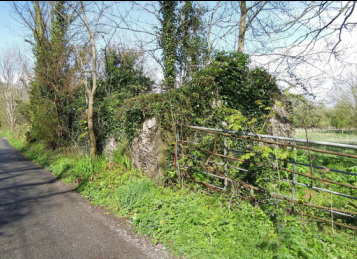
After Sean's marriage to Sheila, the couple were offered a prime piece of land where there was sufficient room to build their very own purpose-built dwelling. It was the ideal place to start a family. The land was in Portlaw, past the area of Coolfinn Cottages. It was approached by the walker about half a mile along this road, across two fields and up an overgrown farm track where few people ever ventured. In fact, it was called 'Little Nook' and had once been owned and lived in by the late Widow Friggs who had willed it to her only friend and neighbour, Ned Hackett. Ned had rented it out to his friend and new business partner, Sean Thornton and his young bride; the beautiful Sheila Thornton, who would one day become the best veterinary surgeon in the county.
While the couple would use all the advantage of modernity in the form of medicines, cures and any scientific device that might assist them in their work, they refused to alter the old rural boundary to 'Little Nook' and ensured that they maintained its rustic charm which fitted in naturally with the surrounding views and countryside. Sheila insisted that if Sean intended to have a garden shed, then she would paint it!
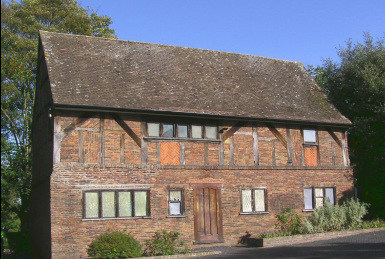
Being allowed to build their own house on the late widow's land seemed an ideal solution for keeping everyone in close proximity to the things, creatures and people that they most loved. They bought a red-bricked old coach house from Wexford and took it down brick by brick and rebuilt the very same structure on their plot of land, using every brick and wooden beam of the original. It seemed fitting to use a stable house as their new marital abode; especially as they were going into the horse breeding business.
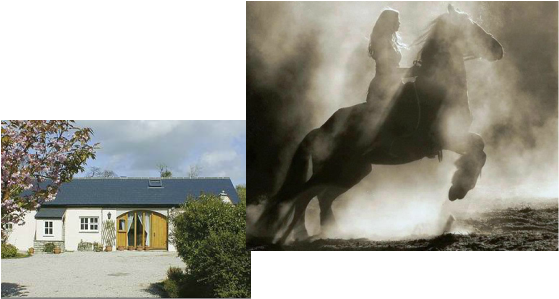
Sean and Sheila didn't have the heart to pull down and demolish the widow's old cottage, so they built their new home alongside it and, after re-roofing and altering the dimensions of the old cottage, enlarging it and installing a wide barn door and renovating it, what had once been the home of Widow Friggs had now been turned into a stable fit for any dozen horses of the finest breeding stock. The name of the dwelling remained as it had always been; 'Little Nook', and the pathway leading to it was levelled out. Every morning at the crack of dawn, the first hour of the day would be spent by Sheila riding one of the family horses they had kept for personal use.
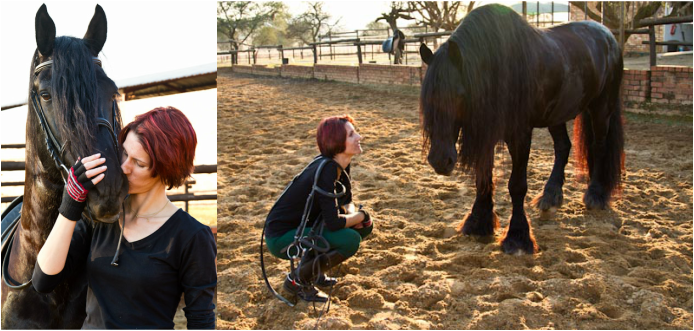
Ned Hackett lived until he was eighty three years old and during the last five years of his life when his mobility declined, he lived with Sean, Sheila and their growing horse-loving family at 'Little Nook'. Sean's wife, Sheila and all of their children, loved having horses around them night and day.
Just as the Widow Friggs had willed Ned her vast fortune when she died, so Ned willed his fortune to Sean in its entirety when he passed away. Having received in excess of £16 million from the widow's estate, plus another £400,000 from the sale of all her stocks and shares, Ned planned to leave Sean and his family with the means of never knowing want for as long as they lived. Sean and Sheila initially continued to breed from the line of Arabian and Andalusian thoroughbreds that Ned had carefully groomed over the past ten years or more. The very first magnificent Andalusian Sean bred, he was determined to keep, and he called it Ned in memory of his dearly departed friend.
Just as the Widow Friggs had willed Ned her vast fortune when she died, so Ned willed his fortune to Sean in its entirety when he passed away. Having received in excess of £16 million from the widow's estate, plus another £400,000 from the sale of all her stocks and shares, Ned planned to leave Sean and his family with the means of never knowing want for as long as they lived. Sean and Sheila initially continued to breed from the line of Arabian and Andalusian thoroughbreds that Ned had carefully groomed over the past ten years or more. The very first magnificent Andalusian Sean bred, he was determined to keep, and he called it Ned in memory of his dearly departed friend.
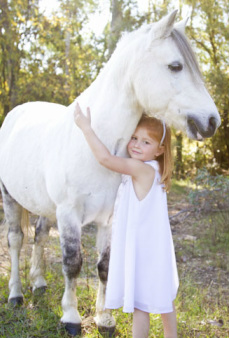
When the couple grew older, although they continued to love beautiful horses, they stopped breeding them as a living and instead, started to invest part of their vast fortune on caring for injured, malnourished and ill-treated horses and donkeys across the whole of Ireland. While Sean and Sheila focused their daily attention mostly on the ill-treated animals they nursed back to health or helped to die humanely, their first daughter who had her own horse was allowed those cherished years of innocent childhood, attending to her thoroughbred pony. Her parents realised that she would be introduced to mankind's cruelty to animals soon enough and, for the present, it was right that she had her eyes shielded from the horrible sights that her parents saw daily in their equine sanctuary for donkeys, mules and horses that had been maltreated.
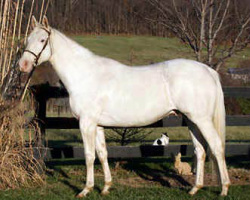
Sean reasoned that though the Widow Friggs had been extremely wealthy for the greater part of her life, she had never allowed herself to become dependent on money, property or possessions. Indeed, she had spent over the last sixty years existing on the most modest of expenditure. Ever since she came to Portlaw, her love and affection had been channelled through two sources only; the mare left to her by her late husband and her loyal neighbour and sole friend, Ned Hackett.
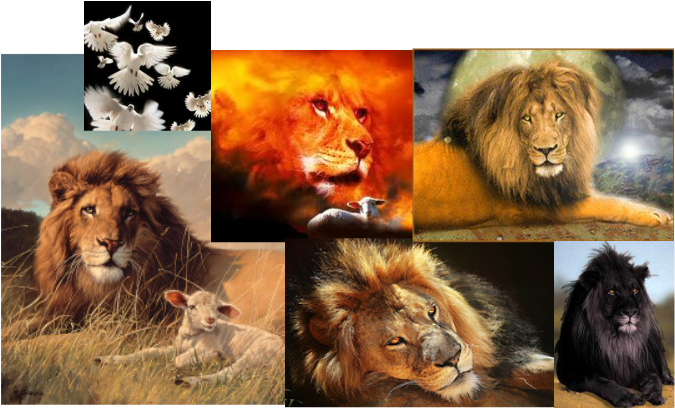
Sean knew that there was simply no way that any person could get to the age of 132 years old without being at peace with the world around them. What happiness she had derived in her long life had come from her friendship with people she had known and grown to love. The satisfaction she derived, came from her nursing years in the Crimean, followed with her years of happy marriage to Lord Harrowby-Friggs and then, ensuring that her lifelong friend and heir, Ned Hackett, was guaranteed the means to live out the remainder of his life doing what he loved doing best of all; horse breeding. As Alena Borowski, she had been as brave as any lion in battle. As the Lady Harrowby-Friggs, she had learnt to live and settle with all class of person. As the Widow Friggs however, who possessed power, position, knowledge and wealth, she was content not to flaunt it and instead, she elected to live out the rest of her days at 'Little Nook' as a lamb of peace who had the courage to lie down with the lions around her. Her every action had been guided by the doves of peace that flew above a war-torn world between wealth and want; a battle that she had long since won.
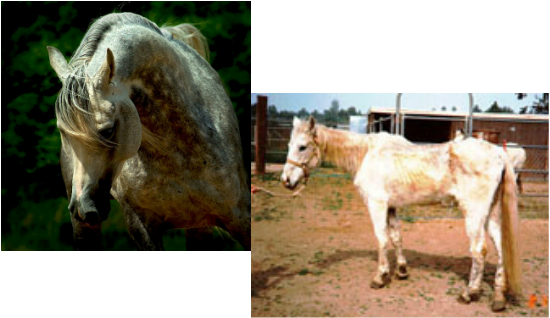
Over the next two years, Sean and Sheila made a momentous decision that they hoped Ned and the Widow Friggs would have approved of if they were both keeping an eye on things from up above. They decided that their rapidly growing knowledge of the equine world could be put to even better use than hitherto if, they were to focus less on the 'beauty' and more on the 'beast'. They therefore decided that instead of breeding the most 'beautiful' horses in the world, they would concentrate their love and attention on caring for the most 'battered' of its species. Having gained her full qualifications as a vet, made Sheila a valuable asset to this type of vocation.
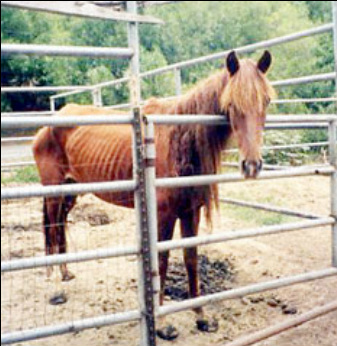
Sean and Sheila had reasoned that just as it had been morally right and just for Nurse Alena Borowski to work with all the wounded and dying soldiers to come her way during the Crimean War, be they Russian, French or British, then it was just as morally right for them to work with all the creatures of the equine world for the rest of their days and, in particular, the dying, beaten, battered and undernourished of horses, ponies, donkeys, asses and mules!
So after donating all of their thoroughbred stock to 'Centres for the Disabled Rider' around Europe, they set about establishing their new centre at 'Little Nook'. Their centre for maltreated and undernourished creatures who had been abandoned by their owners was soon the most overpopulated sanctuary in the whole of Europe by equine patients; many of whom were at death's door by the time they arrived at 'Little Nook'.
Sean and Sheila could hardly believe the vast difference that a few months of loving care and appropriate treatment made to the maltreated creatures that came their way.
So after donating all of their thoroughbred stock to 'Centres for the Disabled Rider' around Europe, they set about establishing their new centre at 'Little Nook'. Their centre for maltreated and undernourished creatures who had been abandoned by their owners was soon the most overpopulated sanctuary in the whole of Europe by equine patients; many of whom were at death's door by the time they arrived at 'Little Nook'.
Sean and Sheila could hardly believe the vast difference that a few months of loving care and appropriate treatment made to the maltreated creatures that came their way.

The happy couple had found their true vocation in life, along with the best possible way in which to use the inherited fortunes of the widow and Ned. There wasn't anything that could provide them with greater hurt than caring for a poor creature and watching it die. This was compensated however, by seeing a donkey, pony or horse enter their sanctuary close to death and then seeing them restored to full health mere months later.
A white they named 'Friggs' was a mare in point. She had been a picture of skin and bone when she originally arrived at the sanctuary, but four months later, she was unrecognisable as having been the very same malnourished horse that Sean and Sheila had first seen. Friggs was retained by the Thornton family as one of their own.
A white they named 'Friggs' was a mare in point. She had been a picture of skin and bone when she originally arrived at the sanctuary, but four months later, she was unrecognisable as having been the very same malnourished horse that Sean and Sheila had first seen. Friggs was retained by the Thornton family as one of their own.
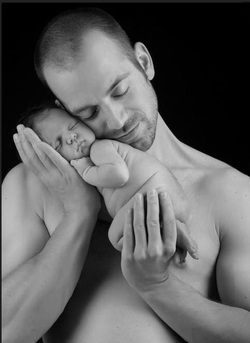
Sean and Sheila had five children over the years and continued to live at 'Little Nook' for the rest of their days. All of the children, being brought up around horses, naturally grew to be equine lovers. They each had their own particular horse as they grew older, which were all kept in the purpose-built stables that they had erected across at Ned Hackett's old farmstead. While Sean was to deliver many births from mares-in-foal over the years, he will never forget the strangest birth of all. It was the birth of his first son, Will, whom he delivered personally in the stable when his wife Sheila went into emergency labour during her ninth month of pregnancy. Her waters had broken and Sean realised that there was no time to lose as she couldn't be safely moved. So with no other available option open to him, he delivered the baby himself!
As the baby was being squeezed out, Sean said anxiously, "It's the wrong way, sweetheart. I can see its head coming!"
"That's the right way, you blockhead. It's a baby, not a horse you're pulling out, feet first."
As the baby was being squeezed out, Sean said anxiously, "It's the wrong way, sweetheart. I can see its head coming!"
"That's the right way, you blockhead. It's a baby, not a horse you're pulling out, feet first."
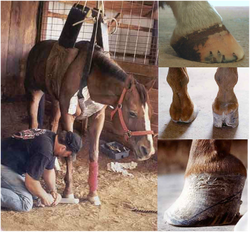
Over the many years that Sean and Sheila were to devote to the nursing of poorly and dying creatures with all manner of complaint, disease and injury, they naturally became more and more knowledgeable and therefore more effective in his treatment of them. They coped with starvation and cruelty by the simple means of an adequate diet and a proper rest and exercise regime. They managed the inevitable death of some, by knowing that they had eased their suffering and pain at the end, aided by the knowledge that they had not died unloved and alone. The disease of Laminitis however, was curse to the couple for a number of years and initially, their efforts to ameliorate this condition proved futile to the ultimate outcome of the horses they treated and nursed and which later had to be 'put down'.
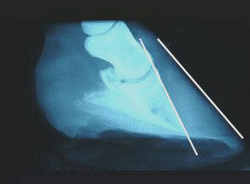
Sean and Sheila weren't the type of people to give up on a poor creature who was next to death's door and gradually, by extra reading and much experimenting, between them they attempted to find some viable treatment for this disease of Laminitis that had blighted the world of horse owners for so many years. So after studying this disease in so many infected horses, they became determined to do something positive instead of feeling obliged to humanely 'put down' the horse in every instance.
Before long, Sean and Sheila had built up an extensive knowledge on this specific condition. They knew that while there were a number of different causes and consequences of Laminitis, the overall effect remained similar. The couple had always known that Laminitis essentially cripples the horse. They learnt that its presence prevents the interaction of the hoof wall and the coffin bone, and that without this vital interaction, the horse is unable to sustain its own body weight because the hoof wall pulls away and the capacity to bear weight is lost. The horse is unable to stand on hard ground as 'sinking' of the pedal bone occurs. Sean and Sheila discovered through x-rays that the deterioration in the laminal structure causes the pedal bone to sink and rotate. Instead of the front of the pedal bone remaining parallel with the hoof, it shifts and all weight-bearing capacity is lost.
Before long, Sean and Sheila had built up an extensive knowledge on this specific condition. They knew that while there were a number of different causes and consequences of Laminitis, the overall effect remained similar. The couple had always known that Laminitis essentially cripples the horse. They learnt that its presence prevents the interaction of the hoof wall and the coffin bone, and that without this vital interaction, the horse is unable to sustain its own body weight because the hoof wall pulls away and the capacity to bear weight is lost. The horse is unable to stand on hard ground as 'sinking' of the pedal bone occurs. Sean and Sheila discovered through x-rays that the deterioration in the laminal structure causes the pedal bone to sink and rotate. Instead of the front of the pedal bone remaining parallel with the hoof, it shifts and all weight-bearing capacity is lost.
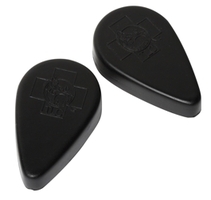
What Sean and Sheila initially came up with was a form of padding which they called a 'frog support' that was built up and heavily bandaged. They had effectively developed a device that actually increased the support of the hoof. They were also to develop a device to help prevent the roof wall pulling away and this was to be a forerunner to a more sophisticated and better designed hoof support by a Mr Nolan that would be used worldwide to great effect in the years ahead in the treatment of Laminitis.
Sean and Sheila's overall treatment programme took a full twenty weeks to implement. During the first month, the horse would be kept as still as possible and prevented from placing its weight on its feet. The couple would achieve this by changing the bedding of the horse and giving it paper to sleep on instead of straw. Being softer than straw and, which discouraged unnecessary movement, the horse would remain still in its sleep, especially if Sean was able to sleep alongside the creature. Sean also prevented the horse putting its weight on its feet during the day by the use of a lifting device that raised the horse off the ground for large parts of the time.
Sean and Sheila's overall treatment programme took a full twenty weeks to implement. During the first month, the horse would be kept as still as possible and prevented from placing its weight on its feet. The couple would achieve this by changing the bedding of the horse and giving it paper to sleep on instead of straw. Being softer than straw and, which discouraged unnecessary movement, the horse would remain still in its sleep, especially if Sean was able to sleep alongside the creature. Sean also prevented the horse putting its weight on its feet during the day by the use of a lifting device that raised the horse off the ground for large parts of the time.
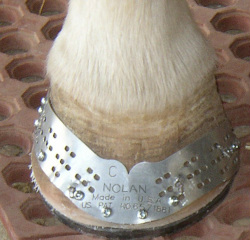
Their idea to forge a plate that was nailed and screwed to the hoof, and which they used to support the roof wall. This device proved most effective. In 2006, Sean's crude device was improved upon and a more sophisticated device than the one they had used came into production. It was known as the 'Nolan Hoof Plate' and its use proved nothing less than revolutionary in the treatment of Laminitis in horses all across the world. The patent owners produced a video explaining the process that they use to restore the horses hoof back to full functioning.
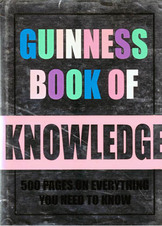
Many an evening as Sean and Sheila wiled away the hours in their twilight years, Sean would look through some of the many editions of the 'Guinness Book of Records' that he annually received as a gift from its publishers. As he perused the records therein of 'this' and 'that', Sean might smile wryly and know that while there were many recorded incidents in the book that were undoubtedly factual, there were probably as many true facts and records that existed which few readers of the 'Guinness Book of Records' would ever know or learn of.
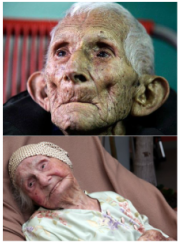
For instance, if you refer to the book to discover 'Who was Erop Borowski?', no mention of his name could be found as he had never made it into the 'Guinness Book of Records'. However, whatever the book said or didn't say, Sean knew that he was never the oldest person alive and that his older sister, Alena Friggs (Nee Borowski) from Portlaw, County Waterford was, and that she lived to be 132 years of age! Indeed, it is almost impossible to ever know if an older person is still alive at any given point, unless they come forward and their story can be verified by an impeccable and impartial source.
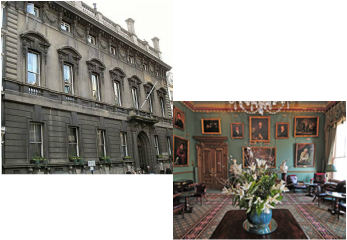
Sir Hugh Eyre Cambell Beaver, KBE retired as the Managing Director of the Guinnesss Board in 1960, but retained contact with Sean Thornton until the week he died in 1967 in a London residency from heart failure. In fact, Sir Hugh and Sean, whenever they met, would play this game of testing out their respective knowledge on records. Three days before his fatal heart attack, Sean and Sir Hugh were having a brandy in the Garrick Club in London and as usual, they tested each other's knowledge on records.
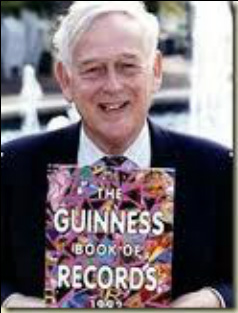
Sir Hugh asked, "Tell me, you... you Portlaw professor........ how many women, since it was first introduced by Queen Victoria in 1857, have been awarded the Victoria Cross?"
"That's easy," replied Sean with a huge grin. "The answer is one!"
"Wrong again, my Boyo," Sir Hugh laughed in a roar of victory. "No woman has ever been awarded the Victoria Cross. But if you don't believe me, don't take my word for it. Check out the book, Boyo! Check out the 'Guinness Book of Records'. If you were right, it would be in the book!"
"That's easy," replied Sean with a huge grin. "The answer is one!"
"Wrong again, my Boyo," Sir Hugh laughed in a roar of victory. "No woman has ever been awarded the Victoria Cross. But if you don't believe me, don't take my word for it. Check out the book, Boyo! Check out the 'Guinness Book of Records'. If you were right, it would be in the book!"
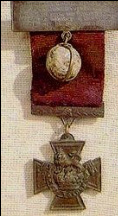
That was the very last occasion that Sean and his old friend and one-time employer, Sir Hugh Beaver met. As Sean read about his old friend's death in the newspapers a few days later, he moved to the top drawer in his bureaux and removed Alena's medal. As he caressed the Victoria Cross, he smiled and mused, "No book can ever have all the facts to hand. You were wrong, my dear friend......I win and you were wrong. God rest your soul."
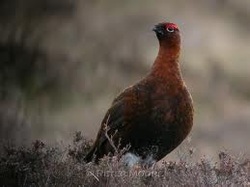
In fact, on a number of important occasions in his life, Sir Hugh had been wrong in his knowledge upon facts; the most important being, the very query that had led to the idea of producing the 'Guinness Book of Records' in the first instance. Sir Hugh would have turned in his grave had he known when he was still alive that the fastest British game bird in Europe was the Red Grouse.
At the time of being offered the lucrative job with Guinness when Sean heard this account, Sean strongly suspected that Sir Hugh had in fact been wrong in his assertion that the Golden Plover was the fastest game bird. However, Sean had been offered a plum job and, when a newly-hired person plays a round of golf with their boss, under no circumstances do they 'go and win' before they are settled in and well and truly established! Sean later discovered that the Red Grouse (Lagopus lagopus scotica), was indeed the fastest British game bird and the 'Guinness Book of Records' (the 36th edition in 1989), acknowledged this fact.
At the time of being offered the lucrative job with Guinness when Sean heard this account, Sean strongly suspected that Sir Hugh had in fact been wrong in his assertion that the Golden Plover was the fastest game bird. However, Sean had been offered a plum job and, when a newly-hired person plays a round of golf with their boss, under no circumstances do they 'go and win' before they are settled in and well and truly established! Sean later discovered that the Red Grouse (Lagopus lagopus scotica), was indeed the fastest British game bird and the 'Guinness Book of Records' (the 36th edition in 1989), acknowledged this fact.
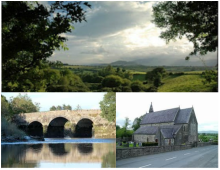
Our story ends where all good stories always end; in dear, old Portlaw. It is the spring in the year of 2012 as 82-year-old Sean Thornton slowly makes his way over the bridge and up the hill towards 'St. Patrick's Catholic Church' where he places flowers upon the graves of the Widow Friggs and his old friend Ned Hackett who are buried in the same plot.
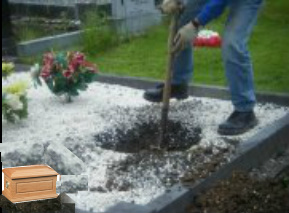
On this occasion, however, Sean is carrying a small spade with him, a wooden casket and a number of treasured artefacts that he intends to return to their owners; the Widow Friggs and Ned Hackett. Sean digs a nice hole in their shared grave space, deep enough to conceal the casket. Then he places all of the precious items inside the casket and buries it. The casket contains treasured photographs, medal, tin cup, and other objects of meaning to his old friend and the widow. He adds one object of his own to the casket: a first edition of the 'Guinness Book of Records', in which he has amended one entry in his own handwriting and signed the verification:
"Widow Friggs: formerly Lady Harrowby-Friggs: Nee Alena Borowski: Officially verified by Sean Thornton as being the oldest person in the world, having attained the grand age of 132 years on the day of her death, March 21st,1957".
"Widow Friggs: formerly Lady Harrowby-Friggs: Nee Alena Borowski: Officially verified by Sean Thornton as being the oldest person in the world, having attained the grand age of 132 years on the day of her death, March 21st,1957".
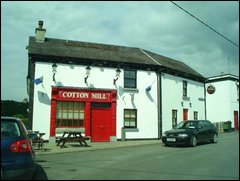
As he makes his way back home, he smiles. Tonight is Friday night out at 'The Cotton Mill'. It is the one time every week when Sean and Sheila venture out from their home base. There is a pub quiz in 'The Cotton Mill' that evening, which he and Sheila always look forward to attending. Sean and Sheila are often on the winning team as the quizmaster invariably gets her questions out of the 'Guinness Book of Records'.
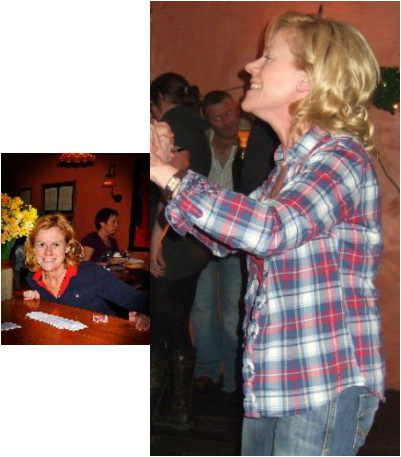
"Now then. A good question for ye all to answer to start with," announced Maggie, the pub landlady and Question Master who is armed with two lists; a set of questions and a set of answers.
"This question is in three parts and will get you one point for each correct answer. Who was the oldest person in the last fifty years, what age did they live to, and where did they die?"
"Do you want the book answer or the proper answer?" Sean laughingly yelled to Maggie.
"Why, the book of course, you eejit! Isn't that the only answer that's worth having? If it's not in the book, it's the wrong answer and you'll not win the prize, you old eejit!" Maggie replied.
Sean and Sheila looked at each other and smiled.
The End. Copyright: William Forde: August, 2012.
"This question is in three parts and will get you one point for each correct answer. Who was the oldest person in the last fifty years, what age did they live to, and where did they die?"
"Do you want the book answer or the proper answer?" Sean laughingly yelled to Maggie.
"Why, the book of course, you eejit! Isn't that the only answer that's worth having? If it's not in the book, it's the wrong answer and you'll not win the prize, you old eejit!" Maggie replied.
Sean and Sheila looked at each other and smiled.
The End. Copyright: William Forde: August, 2012.
|
Click here for the next page
|
Click here for the previous page
|
